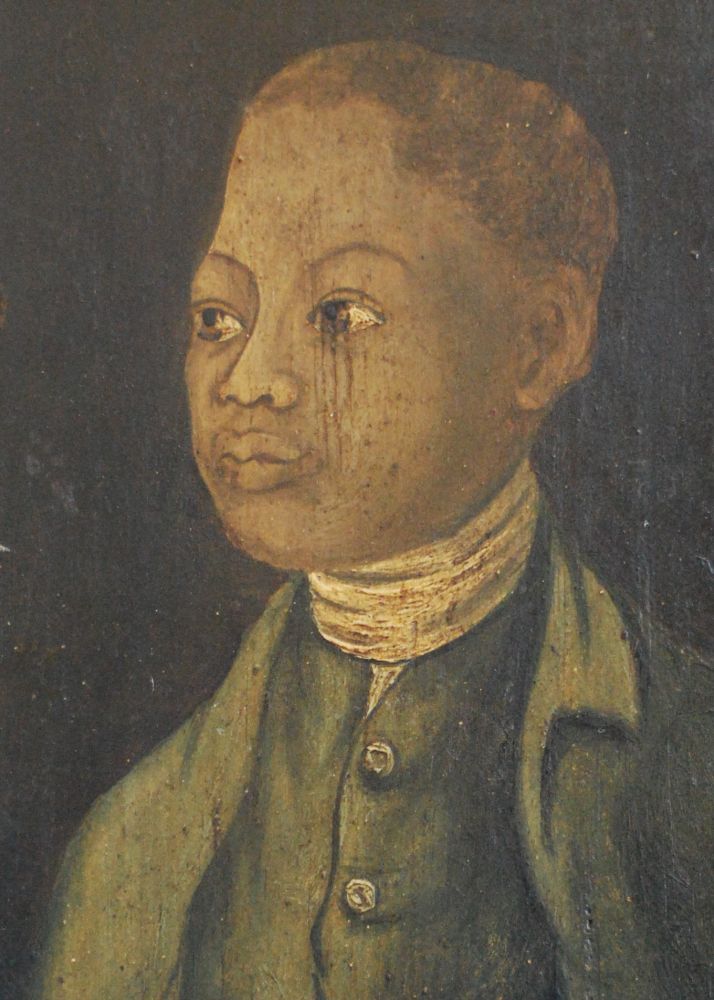In recent weeks a town not far from us, Criccieth, has held a special celebration in honour of an important historical resident, John Ystumllyn. A ceremony was held, and a breed of yellow rose has been named after him – a rose which has also been planted at Buckingham Palace.
But who was John Ystumllyn, and why was he important in our local history?
Also known as ‘Jac Du’ (‘Jack Black’), it’s not known exactly when John Ystumllyn was born but it was some time in the early 18th century. It’s thought that he was a childhood victim of the slave trade, who was brought to Wales from either West Africa or the West Indies as a young boy.
The Wynn family took John to its Ystumllyn estate where he was christened, and during his early years there he was taught English and Welsh by local people and learned horticulture and craftsmanship, going on to use these skills in the estate’s gardens and becoming a celebrated gardener as a result.
In 1768 John married a local maid, Margaret Gruffydd, and after having seven children together (only five of whom survived, their descendants still living in the area today) the couple eventually returned to the service of the Wynns, who in recognition of John’s work gifted him a cottage to live in with large gardens to tend.
John Ystumllyn died in 1786 and was buried at St Cynhaearn’s church near Criccieth, where there is a monument to him. By all accounts he was a well-liked character who experienced very little racial prejudice despite being one of very few people of colour in this part of the country at that time.
No doubt visitors to the Black Boy Inn over the years have wondered whether John Ystumllyn is the black boy after whom the establishment was named. In fact, if you visit the history page of our website, you’ll see that a literal black boy is one of at least three main theories as to how the pub received its name – the other two main suggestions being a black buoy in the sea beyond the town walls, and the English king Charles II.
While a black buoy is not inconceivable – Caernarfon is a coastal town, after all – and while it would be tempting to believe that, despite the lack of any concrete evidence that John Ystumllyn had any ties to the town, the pub might have been named after him specifically, it’s far more likely that the Charles II theory is closest to the truth.
We know that at some point before the early 1800s Newgate Street, where the Black Boy Inn stands, was locally and informally known as Black Boy Street. The current Black Boy Inn building was once two separate establishments – the King’s Head and the Fleur de Lis, both of which point to a royal connection (the Fleur de Lis device being prominent in the coat of arms of the Stuart kings as well as that of the Price of Wales, which Charles II was before being crowned).
It’s said that the King’s Head was known as the Black Boy informally before 1791, and local legend says that secret royalist meetings were held at the inn during the English Civil War.
And if you’re wondering how these facts have anything to do with a black boy, here’s the most compelling evidence of all: Charles II’s childhood nickname, given to him by his mother, was ‘my little black boy’, in recognition of his dark hair, eyes and complexion. Some people today still opine that Charles was in fact a black man, but we’ve yet to see any proof of this.
There are a good many pubs in Britain named The Black Boy, and all of these establishments are said to have been named after Charles II. A quick search reveals many Black Boy Inns, for example there’s one in Weeley, Essex; another in Solihull; one in Rochester and another in Sevenoaks; to name but a few.
While we’re not completely ruling out a possible connection to John Ystumllyn, or another, anonymous real-life black boy arriving off a ship hundreds of years ago at Caernarfon’s quayside – or indeed the more humdrum suggestion of a buoy in the maritime sense – the likelihood is that The Black Boy Inn in Caernarfon was in fact named after King Charles II.
If you found this story interesting and would like to do some more reading, here’s a few links you could visit:
https://en.wikipedia.org/wiki/Charles_II_of_England
https://en.wikipedia.org/wiki/Fleur-de-lis#United_Kingdom
https://en.wikipedia.org/wiki/John_Ystumllyn
https://www.bbc.co.uk/news/uk-wales-61545591
https://web.archive.org/web/20110708121212/http://www.carnarvontraders.com/publicans.html
https://www.theblackboyknowle.co.uk/our-history/
https://www.gazette-news.co.uk/news/18776165.black-boy-pub-weeley-90-believe-not-renamed/


